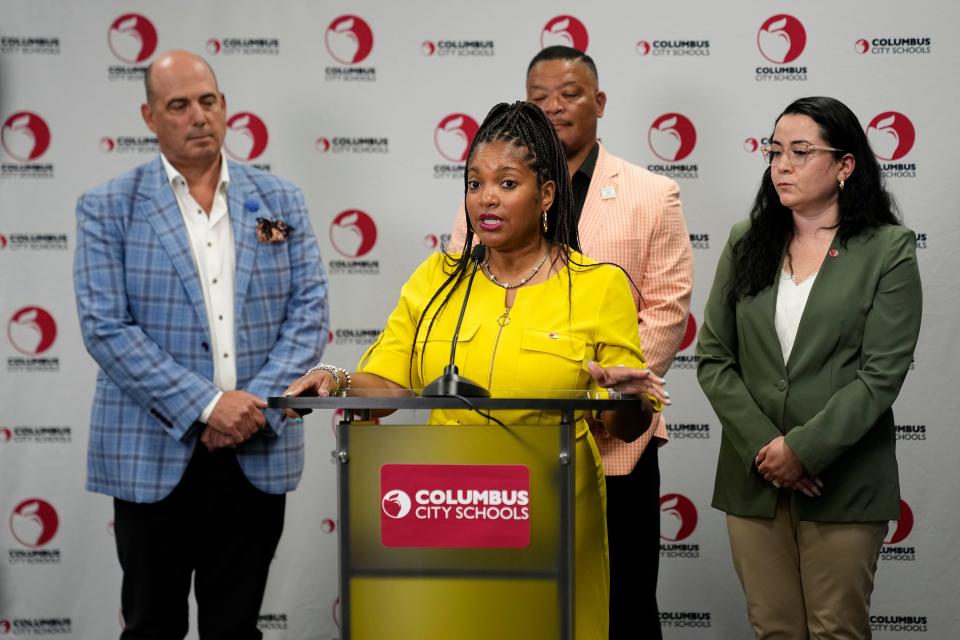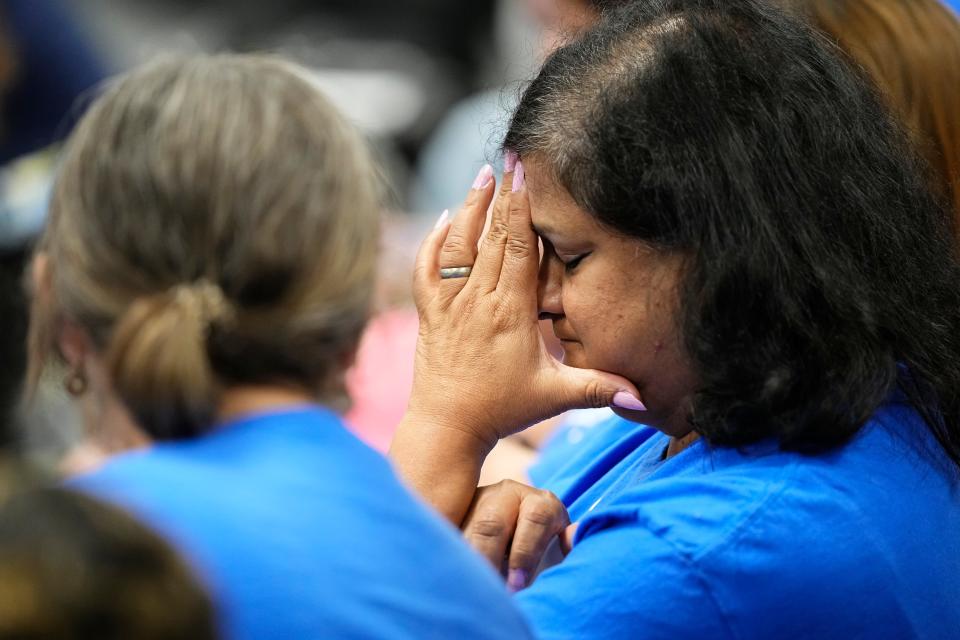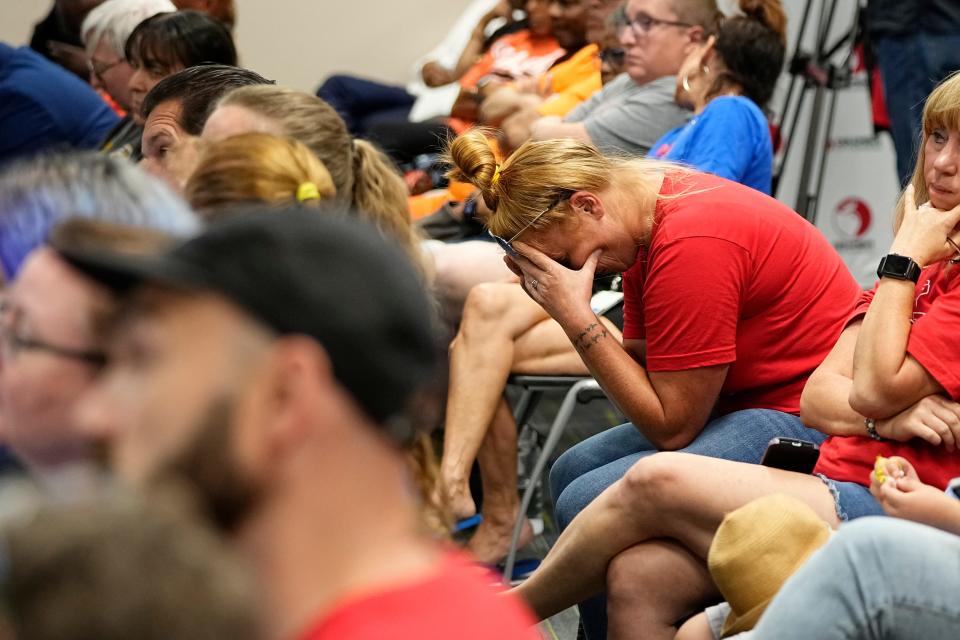Will Columbus kids be served? School board must answer serious questions before closings.
There's zero doubt the Columbus City Schools district needs to close some of its 113 buildings, not to mention to figure out how to dispose of other closed schools wasting $400,000 of taxpayer money annually.
The multi-million dollar question is whether the proposal submitted June 25 by the Superintendent's Community Facilities Task Force is the proper plan or needs adjustments for Ohio's largest district of 46,000 students, down from 110,173 during the 1971-72 school year.
The task force originally proposed closing up to 20 school buildings under nine different recommended scenarios.
But in a final report, it recommended closing six elementary schools, two middle schools, a high school and the downtown administrative building. The task force also recommended the district modify the age groups served by four schools. None of the changes would begin before the fall of 2025.
What's in the CCS closure plan? Read details of task force recommendations
The school board wisely chose to take more time on the matter that night, with President Christina Vera saying the members needed to take more time to hear from the community. The next regular board meeting is in August.
What can't happen now is for the board to again fail to act as it did in 2018 following a similar process. Board members are voluntarily elected to make difficult decisions that will never please everyone. They must agree to a plan that balances educational needs with fiscal accountability to taxpayers. Nor can they cave to the teachers' union which stopped participating in the closure process.
So, here are our questions for board members to answer before finalizing the plan.

Do the recommendations help kids?
When Superintendent Angela Chapman visited our editorial board earlier this year, her pitch for school closures focused heavily on improving educational opportunities. She spoke passionately about low-enrollment high schools struggling to serve students.
That's a worthy goal we can heartily endorse if CCS leaders can explain exactly how this proposal turns that vision into reality with concrete examples. There is much room for improvement.
The district only earned one-star ratings in the graduation and early literacy categories on its 2022-2023 report card from the Ohio Department of Education. It received two stars in the achievement category and three stars each in progress and gap closing under the new system. Up to five stars are possible in each category.
Just as importantly, how will the district work to ensure these changes are as minimally disruptive as possible? The task force already took a significant step in that direction by scrapping plans to close Cranbrook and Siebert elementary schools, which all have significant English as a Second Language programs. But what else can be done for students struggling after the COVID pandemic?

Will Columbus need to close more schools?
Deciphering the future remains impossible although many do their best to predict population growth and other factors that influence how many children walk through the doors of a public school.
With experts predicting substantial population growth throughout central Ohio and the city of Columbus seeking rezoning to allow for denser residential projects on key corridors, one has to wonder what the long-term impact may be on Columbus schools. Could enrollment increase?
Of course, major portions of the city are served by suburban school districts, one of the key reasons Columbus' enrollment has fallen as the city has grown. Charter and private schools, currently benefiting from expanded vouchers and friendly conservative lawmakers in the Ohio General Assembly, also impact enrollment.
Our View: Unhinged, unethical document shouldn't stop board from closing schools. District is too big.
If enrollment continues to decline, what would come next for building closures? Presumably some of the originally recommended schools might be on the hook again?
Our main concern is avoiding major capital expenses on buildings we may not need in five or 10 years. Remember, all of the schools being closed were retrofitted for air conditioning to help settle the 2022 teacher strike.
What is the longer-term plan taxpayers deserve?

Exactly how much money will be saved?
The proposed closures could save about $9 million a year, although that number is heavily influenced by not making $7.7 million in capital improvements each year, the district said.
CCS says it would save $853,000 on maintenance and $788,000 on utility costs annually, although it only spends $400,000 on currently closed schools.
To us, there also should be some additional savings on personnel from reducing principal positions and maintenance personnel.
More details are needed.
Could sale of downtown building be lucrative?
We're intrigued by the proposal to close the downtown Columbus Education Center, 270 E. State St., presuming there is sufficient space to house employees at the district administrative building at 3700 S. High St., where most board meetings are currently held. The move also needs to be cost effective, meaning the avoidance of major renovation costs to make it possible.
The district's downtown lot, which spans most of an entire city block with its parking lot, could be in high demand given the desires of developers for new apartment buildings and other projects. It's also near the ever-expanding Grant Medical Center.
If CCS vacates this building, there needs to be a specific accounting of related expenses and a plan to reinvest any proceeds for the benefit of the community.
As for board meetings, why not host them in high schools across the district?
What will the district do with currently vacant schools?
We suspect one reason Columbus already maintains 12 vacant properties can be found in Ohio law. Public districts are now required to make "surplus" schools available to high-performing community or charter schools.
We doubt CCS wants to aid its competitors by handing over buildings that could help charters become more successful.
Chapman wants to use vacant schools for a community partnership offering early childhood education to pre-kindergarten children, which benefits CCS and children.
But if that can't work out, the school board needs to clear about whether it plans to keep paying money to heat and maintain vacant schools.
Not all details are possible
We understand district officials can't answer every question we or the public may pose, especially how individual school boundaries may be impacted.
But openly answering these questions and other worthy queries from the public would go a long way to addressing the fallout from board member Brandon Simmon's awful written plan to steamroll public concerns about school closures. The board needs to show voters its listening after its successful $100 million levy campaign last fall.
Responsive and inclusive engagement must take place before any vote to close schools, even if not everyone will agree with the plan.
It's up to the school board to make that happen.
This piece was written by Dispatch Executive Editor Michael Shearer on behalf of the editorial board of The Columbus Dispatch. Editorials are fact-based assessments of issues of importance to the communities we serve. These are not the opinions of our reporting staff members, who strive for neutrality in their reporting".
This article originally appeared on The Columbus Dispatch: Questions must be answers before Columbus City Schools closes buildings

